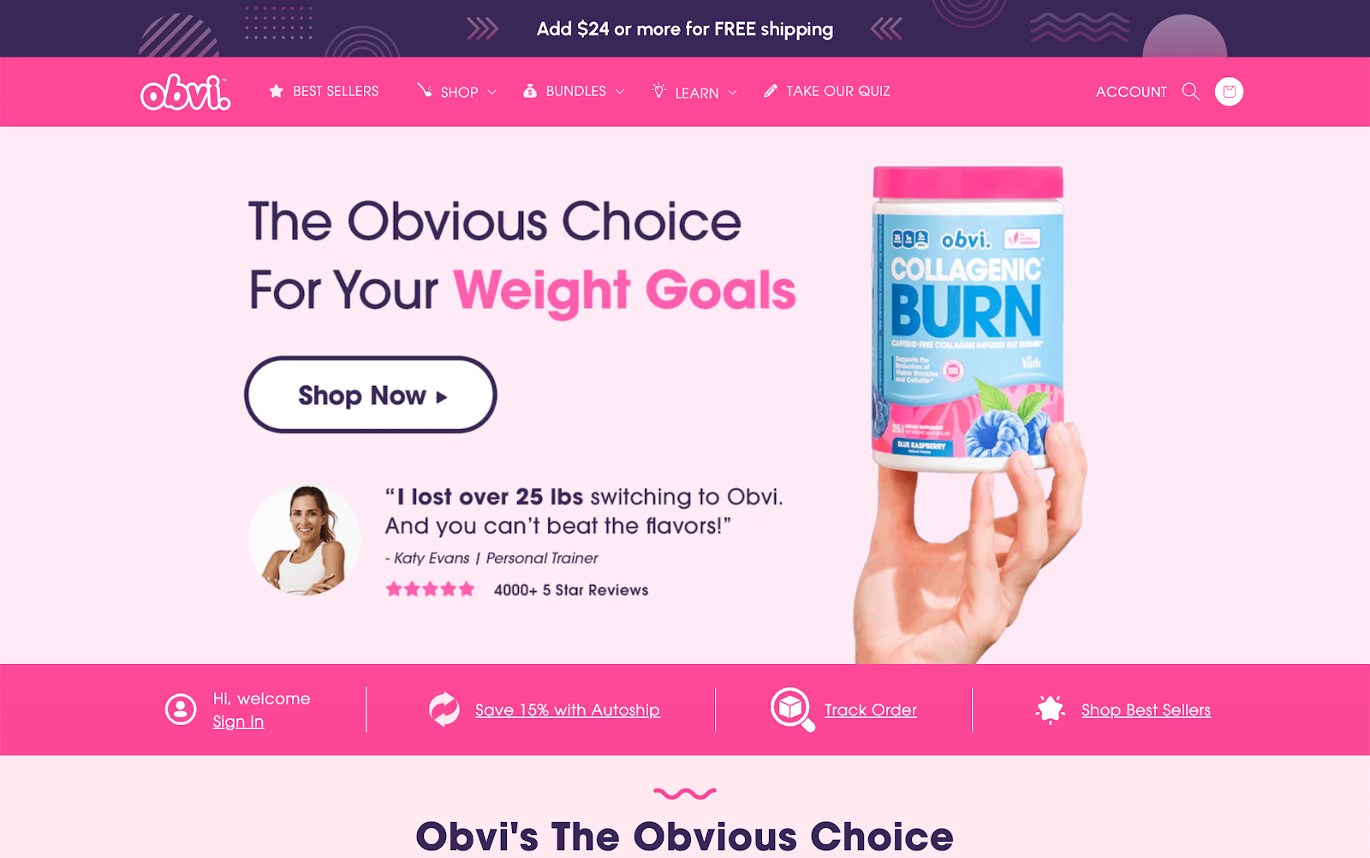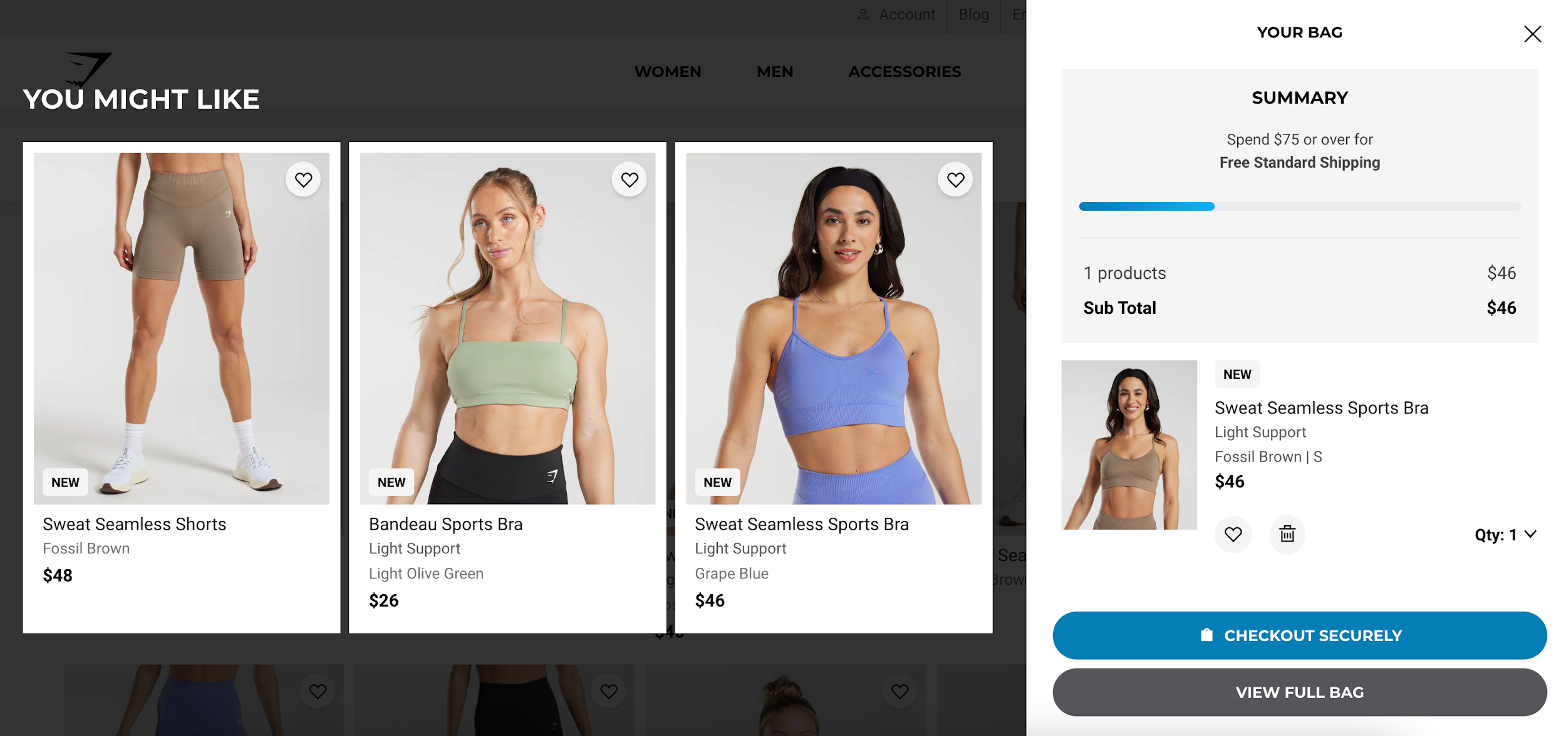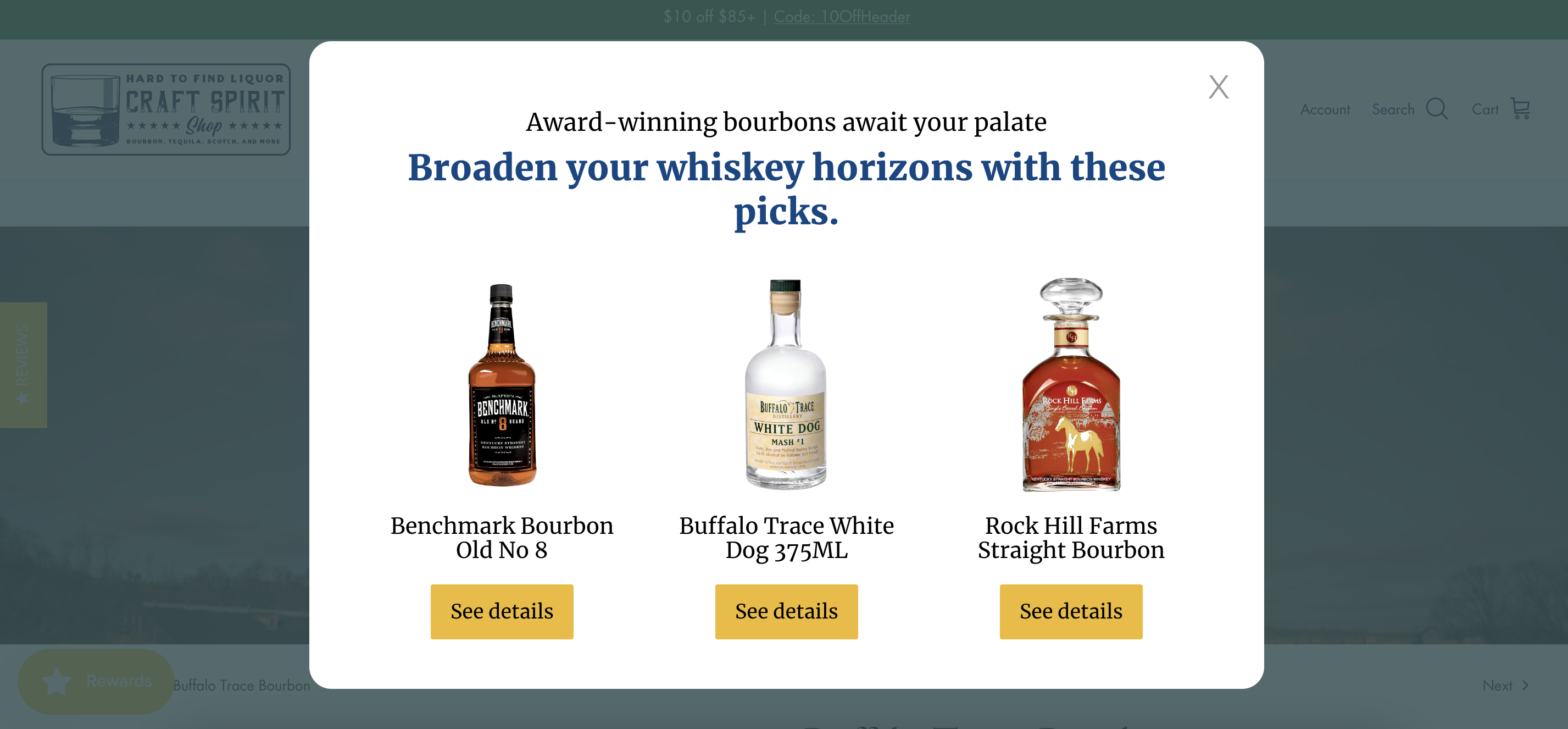- Blog
- How to Upsell: 11 Strategies to Boost Your Sales
How to Upsell: 11 Strategies to Boost Your Sales
-
Nikolett Lorincz
- Ecommerce
- 6 min read
Table of Contents
Upselling has become one of the most popular ways for an online store to boost sales and achieve a higher average order value.
But it’s not just ecommerce… upselling strategies are also common among airlines, tech companies, and many other industries that regularly employ the sales tactic. This shows that upselling techniques are a tried and tested way of pursuing more revenue.
Making even a little bit of extra money as a result of upselling (and cross-selling) strategies can add directly to your profit margin.
In this article on how to upsell in ecommerce, we’ll go over eleven ways you can make more money by upselling to your existing customer base.
But first, let’s define upselling!
What is upselling?
Upselling is a sales strategy where a seller encourages the customer to purchase more expensive items, upgrades, or other add-ons in an attempt to make a more profitable sale.
Upselling happens everywhere. From your favorite coffee shop where they ask if you want a larger size for a tiny bit more, to a tech ecommerce store suggesting a protective case for that new gadget you’re buying.
It’s all about offering an upgrade or an addition that improves the initial choice.
But why is upselling everywhere?
Simple. Because it works.
It helps to increase sales and average order value, while also increasing ROI as it costs less to sell more to someone who’s already buying than to find a new customer.
What’s the difference between upselling and cross-selling?
Upselling and cross-selling might seem like the same sales technique, but they’re actually different. Let’s break it down.
Upselling is all about the upgrade. It’s when you’re looking at one thing, and the seller suggests a better version of that same thing. Think of it as being offered a bigger burger for a little extra cash. It’s still a burger, just more of it or better in some way.
Cross-selling, on the other hand, is like the seller saying, “Hey, you know what would go great with that burger? Some crispy fries and a cool drink.” It’s not about making the original item better; it’s about adding different things that complement it.
Here’s a simple way to remember it:
- Upselling: More expensive, but better version of what you’re already getting.
- Cross-selling: Different stuff that goes well with what you’re buying.
Why do businesses do both?
Because together, they’re a powerhouse. Upselling boosts the value of the item you’re interested in, and cross-selling introduces you to stuff you might not have thought of but now suddenly need.
Imagine you’re buying a phone online. The website suggesting a model with more storage is upselling. Then, showing you a cool case and headphones to go with it? That’s cross-selling. They’re making sure you walk away with a full package that you’re super happy with.
11 upselling strategies
Now let’s take a look at the best upselling examples and strategies you should use.
1. Offer relevant add-ons and upgrades
The core of any upsell strategy is the way it presents products, features, or services that are complementary to the original purchase.
It’s crucial that these offers bring real value to the purchaser, whether that’s in terms of increased access to customer service, higher quantities, or better product performance.
Whichever type of add-on you want to sell at a higher price point, you should make sure that customers can see that the benefit they’ll receive is worth it. That means you should use clear, effective messaging when you’re upselling.
BestBuy does a great job of promoting relevant products as add-ons in the example below. They promoted adding Microsoft 365 to purchases of laptops for a small extra fee. This is a great match, because people who are buying laptops will naturally want to use software like Office on their new computers.

2. Create bundled packages
Offering bundles of products to your customers is one of the sales strategies that leans more towards cross-selling.
Instead of just selling one item on its own, you can suggest combinations of different items that go well together. Dollar Shave Club, for example, sells bundles of shaving equipment, allowing customers to buy razors, shaving cream, and aftershave in one purchase.
Ideally, the amount of value that the bundle brings to the consumer should be greater than the cost of the items on their own.
The convenience of buying bundles is a large benefit to consumers, since they don’t have to spend the time that it would take to make several purchases.
Bubble Skincare has lots of bundles on its website. After all, it makes perfect sense to sell a whole skincare routine instead of just selling individual products. They make it easy for customers to choose the right bundle of products for their needs by offering many different options.

3. Promote free shipping
Anyone from any sales team will say that offering free shipping is one of the best approaches to boosting sales online. Customers place a lot of value in getting free shipping, with 9 out of 10 saying that free shipping is the foremost incentive to shop online more.
That’s what makes it a great upsell offer.
You can use a sticky bar to showcase cost-saving benefits for customers when they spend a certain amount of money.
A free shipping threshold will convince your customers to shell out for a more expensive version of a product. It’s the best way for a small business to boost their average order value and overall revenue.
Using OptiMonk, you can create a dynamic free shipping bar that will keep your upsell offer at the top of your customers minds. By updating as customers add products to their cart, you can display exactly how much more someone has to spend to qualify for free shipping.

4. Implement limited-time offers
Limited-time offers are a great way of encouraging more customers to make a purchase now rather than procrastinating. Most of the people who think “I’ll buy that later” won’t actually return to your store, ever.
Both your new customers and your current customers will be more likely to pay for a higher-priced option if they’re getting a deal on the upgrade or bundle you’re upselling. And that conversion rate will only increase when you make those offers time limited.
Customers browsing eBay, for example, would be more likely to purchase one product rather than another as a result of a good deal.
Another way of creating a sense of urgency is by utilizing scarcity to drive customer decision-making. When customers can see that the stock of an item they love is running low, they’ll be motivated to make the purchase right then and there.
5. Provide personalized recommendations to new and existing customers
Personalized offers can make customers feel understood and valued throughout the sales process.
Both your new and current customers will have expectations about how the sales process should function and what kind of customer experience they should have. You don’t want browsing your site to be an unpleasant experience filled with all sorts of random recommendations.
Instead, you should use personalization to ensure that your customers see relevant content that they’re actually interested in.
For example, if most customers search for a keyword like “weight loss 20 days” in order to land on your blog, make sure that the upsell offer you’re promoting has something to do with weight loss.
A sales strategy like this depends on the quality of the customer data you have at your disposal. If you want to sell online in 2023, you need to be both collecting and leveraging as much zero-, first-, and third-party data as you can.
This is how Gymshark provides personalized upsell recommendations based on what products customers have already added to their carts.

As you learn more about your customers, it’s possible to use personalization to encourage a future purchase (or more than one). OptiMonk actually has a number of features that can help you optimize your returning customers’ experience.
Here’s a brand that uses an individual’s past purchase history to personalize their recommendations.

6. Offer incentives and rewards
Any guide on how to upsell will tell you that providing special discounts or loyalty rewards as upsells is a winning strategy.
Incentives for upselling and cross-selling can really help customers make a decision quickly. You should highlight why your incentives and reward program are valuable in a clear, easily understandable way.
As we pointed out above, you can really increase a customer’s motivation to take advantage of a loyalty program by making the deals time-limited. It’s a good idea to promote these upsell offers on your product pages.
7. Display product comparisons
Sometimes customers fall out of their “buying mode” when they’re presented with too many options (a phenomenon known as decision paralysis).
Making it easy for customers to compare different products and bundles is essential, ensuring customer education happens in a quick, seamless manner.
That’s why many brands use tables like the one below to showcase the benefits of upsell products. By highlighting the superior features of higher-tier options, you can convince customers to choose to spend the extra dollars.

8. Leverage social proof to win customers’ trust
Gaining a customer’s trust is an essential part of making a successful upsell. After all, you’re not only trying to encourage customers to buy a product, you’re trying to convince them to spend even more than they were planning to spend.
Social proof in the form of positive customer reviews and testimonials is a great way to get rid of any customer doubts. When people see others enjoying their purchases, they’re naturally inclined to want a product even more.
Here’s how Vegetology showcases the positive social proof that they generate.

9. Upsell after the purchase
Post-purchase upsells are deals that you offer after a customer has completed a purchase. You should offer complementary products or services that will enhance the customer’s experience with their initial purchase. This gives your upsell offer real value.
Saas companies often make use of this strategy, offering current customers access to more features on higher payment plans.
And since many of these customers will have just made a purchase, you can capitalize on the customer’s satisfaction and trust to drive more sales.
10. Offer loyalty perks
When a company establishes a loyalty program that rewards customers for accepting upsells, they’ll establish an excellent motivator for their audience to buy almost the same product at a higher price point.
That’s because loyalty programs can create a win-win situation for both customers and a business. The customer gets great deals and free gifts in exchange for being a great customer. It works really well!
A loyalty program can increase revenue by building a base of loyal customers and thereby increasing both your customer retention and customer lifetime value.
11. Use a Smart Recommender upsell popup
Imagine walking into a store where the salesperson knows exactly what you like. That’s what the AI-powered Smart Recommender popup does on your website. It’s like having a smart buddy who says, “Hey, based on what you’ve been checking out, you might really dig this!”
When someone’s browsing your site, OptiMonk AI’s smart tech can pick up on what they’re into. Then, when the moment’s right, an upsell popup jumps in. It’s not pushy. Instead, it feels like it’s been tailor-made, showing products that fit their style.
And here’s where it gets really cool: Instead of a boring old “Buy this too,” imagine a headline on the popup that’s all about making their day better.
Something like, “Wanna make your workouts even more epic?” if they’ve been looking at gym gear. It’s personal, it’s engaging, and it shows you get them.
Here’s an example from Craft Spirit Shop. When visitors viewed the Buffalo Trace Bourbon product page, they saw a popup recommending award-winning bourbons:

This is a great upselling technique. When customers feel that kind of personal connection, they’re way more likely to take your upsell offer and come back for more.
FAQ
How do I know what to upsell?
Focus on products that complement what the customer is already interested in. Use their browsing behavior and past purchases as clues. The goal is to offer items that are relevant and useful to them and solve their pain points.
Can upselling annoy customers?
It can, if not done right. Always ensure that your upsell offers are relevant and add more value. Avoid bombarding customers with offers and give them the space to make their own decisions.
What’s the best time to attempt an upsell?
The best time is usually after the customer has decided to make a purchase but before the sale is finalized. This is when they’re already in the buying mood. However, be tactful and don’t interrupt their shopping flow.
Are there any tools to help with upselling?
Yes! Many ecommerce platforms offer tools and plugins that can automate upselling by showing relevant product recommendations or popups based on customer behavior. OptiMonk, for instance, is an all-in-one conversion rate optimization tool that allows you to show product recommendation popups based on behavior.
Check out this video to uncover the top 5 upsell apps that can boost your revenue:
How can I upsell without lowering the perceived value of my products?
Highlight the benefits and exclusive features of the higher-priced items. Make sure the customer understands what makes the upsell product a better value and worth the extra money.
Can upselling work in service-based industries?
Absolutely! If you offer services, you can upsell by offering premium versions of your service, add-ons, or longer-term packages. The principles of adding value and enhancing the customer experience remain the same.
How do I measure the success of my upselling sales strategy?
Track metrics like average order value, conversion rates on upsell offers, and overall customer satisfaction. These indicators will help you understand how effective your upselling efforts are and where you can improve.
Upselling is a successful marketing tactic that, when done thoughtfully, can significantly increase sales. Remember, it’s all about offering value and making sure your customers leave happier and more satisfied than they came.
Wrapping up
And there you have it—your go-to guide on how to upsell without coming off as pushy or salesy.
Upselling isn’t just about making a few extra bucks. It’s about giving your customers more of what they love, showing them options they might not have thought about, and making the customer journey a whole lot better.
There are lots of different ways to pursue more upsells, from cleverly bundling items that are frequently bought together or implementing a free shipping threshold to personalizing your product recommendations.
If you’re interested in trying out upselling and cross-selling, we’d recommend signing up for OptiMonk. Our advanced conversion rate optimization software has all the tools you need to execute the perfect upsell strategy for your business!
Migration has never been easier
We made switching a no-brainer with our free, white-glove onboarding service so you can get started in the blink of an eye.

What should you do next?
Thanks for reading till the end. Here are 4 ways we can help you grow your business:
Boost conversions with proven use cases
Explore our Use Case Library, filled with actionable personalization examples and step-by-step guides to unlock your website's full potential. Check out Use Case Library
Create a free OptiMonk account
Create a free OptiMonk account and easily get started with popups and conversion rate optimization. Get OptiMonk free
Get advice from a CRO expert
Schedule a personalized discovery call with one of our experts to explore how OptiMonk can help you grow your business. Book a demo
Join our weekly newsletter
Real CRO insights & marketing tips. No fluff. Straight to your inbox. Subscribe now
Nikolett Lorincz
- Posted in
- Ecommerce
Partner with us
- © OptiMonk. All rights reserved!
- Terms of Use
- Privacy Policy
- Cookie Policy
Product updates: January Release 2025









